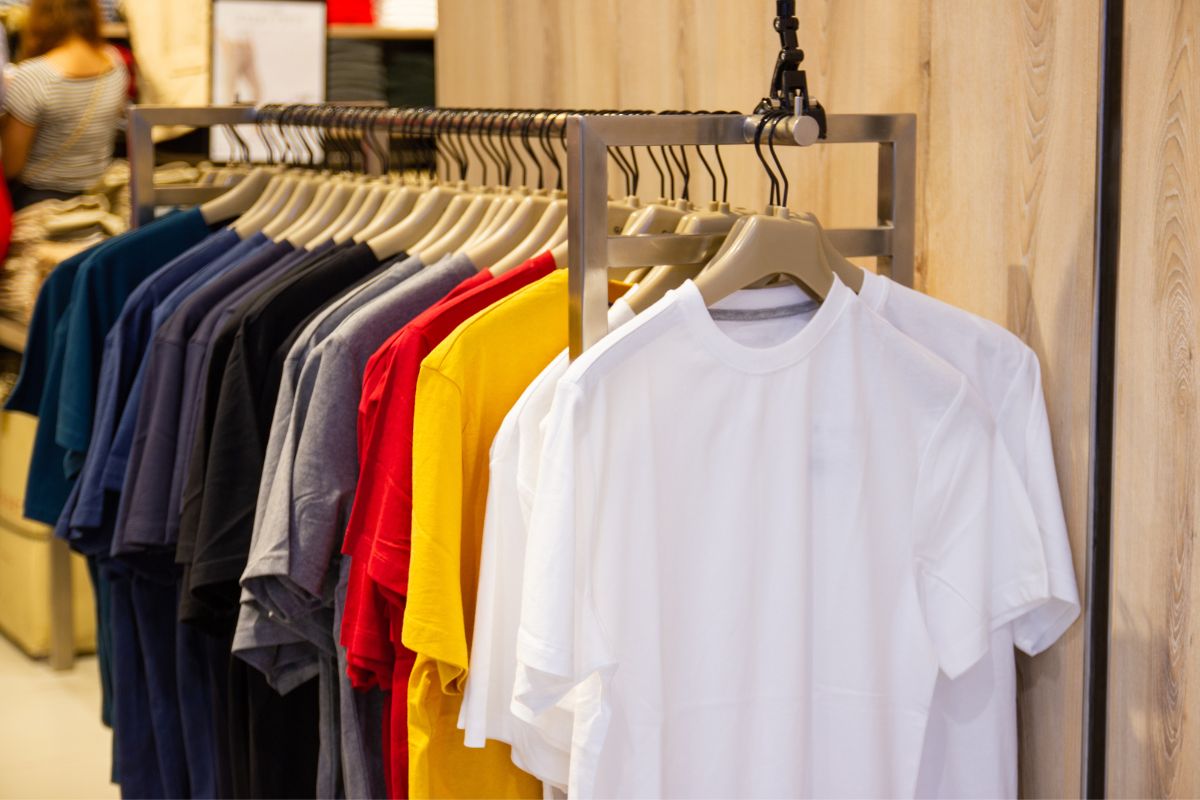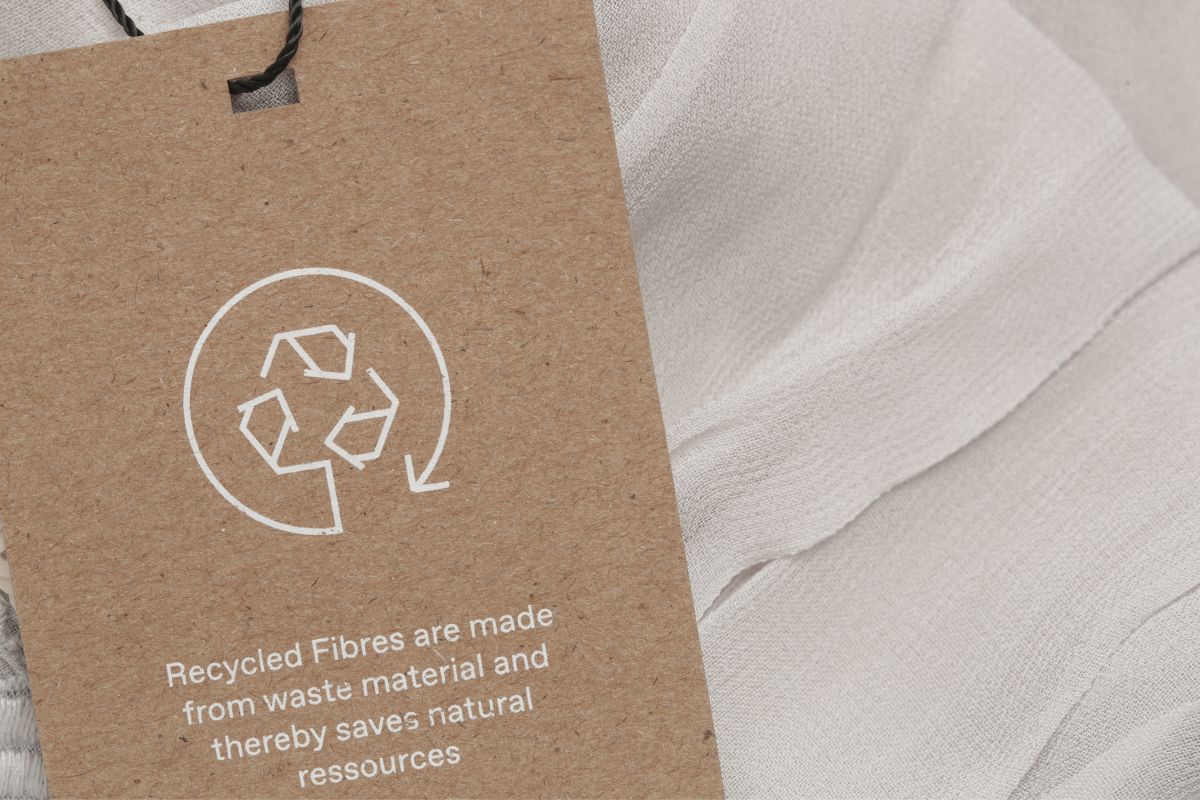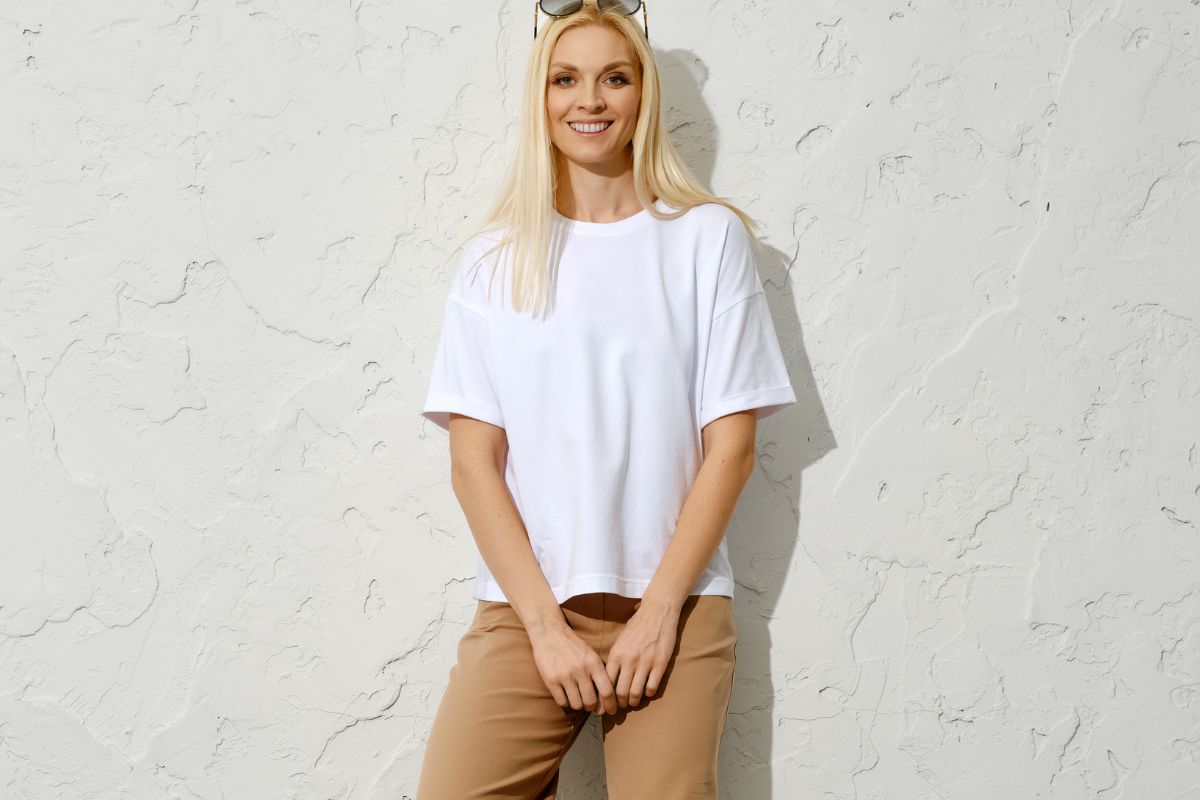When considering t-shirt sizes, you might think of the standard range from small to extra-large. However, the scale extends far beyond what you might find at your local retailer. The largest standard t-shirt size that’s widely recognized is 10XL. This size is designed to accommodate those who need a significantly larger garment than the typical XL. Beyond standard sizing, there are custom options that can cater to any size requirement.
In 2023, the record for the largest t-shirt ever made was set by Asociatia 11even, Kaufland Romania, and the Romanian Rugby Federation in Bucharest, Romania. This gigantic t-shirt measured 108.96 meters in length and 73.48 meters in width, which is roughly equivalent to the size of a professional football field. Interestingly, this t-shirt was constructed using fabric made from over 300,000 recycled plastic bottles, illustrating not only an achievement in size but also an innovation in sustainable fashion.
Traditional t-shirt sizes are there to guide you, but custom and record-breaking sizes show that the possibilities in t-shirt manufacturing are almost limitless. Whether for everyday wear or to create a statement piece, there is a size available to suit every requirement, ranging from the widely available options at stores to custom-made items designed for unique needs or occasions.
Understanding T-Shirt Sizes
Navigating t-shirt sizes can be confusing due to varying sizing standards and the importance of fit. This guide will help you understand how to choose the right t-shirt size by explaining different sizing systems, breaking down the size chart, and discussing why fit matters.
Different Sizing Standards
T-shirts are sized differently across brands and regions. In the US, standard sizes are Small (S), Medium (M), Large (L), and Extra-Large (XL), with more sizes on either end of the spectrum, including XS and various plus sizes up to 10XL. The largest commonly available size is often 10XL, but specific measurements vary between manufacturers. European and Asian sizes are typically marked differently, and conversion may be necessary when purchasing from international brands.
T-Shirt Size Chart Explained
Size charts are essential tools for selecting the correct t-shirt size. The chart typically lists various measurements: chest, waist, length, and sometimes shoulder width. Here’s a simplified men’s t-shirt size chart:
| Size | Chest (inches) | Waist (inches) | Length (inches) |
| S | 34-36 | 28-30 | 25-27 |
| M | 38-40 | 32-34 | 27-29 |
| L | 42-44 | 36-38 | 29-31 |
| XL | 46-48 | 40-42 | 31-33 |
For reference, sizes continue increasing in similar increments, with variations for fit as necessary. To use the t-shirt size chart, measure your chest, waist, and t-shirt length preference typically in inches (or cm for non-US sizing charts), and compare with the chart to determine your size.
The Importance of Fit
The right fit ensures comfort and style. While a t-shirt size chart gives a general idea, factors like material, cut (standard, slim fit, etc.), and body shape can affect the overall fit. For a good t-shirt fit:
- The chest measurement should allow for ease of movement without excess fabric.
- The length should cover your waistband and possibly extend a few inches below.
- The waist should be neither too loose nor constricting, providing a look that complements your body without being baggy.
Always consider the fit when selecting a t-shirt, as different styles (slim fit, relaxed fit, etc.) will affect the sizing, and body measurements are more reliable than simply choosing a size you routinely purchase.
Largest T-Shirt Sizes

In selecting the largest T-shirt sizes, your size options in men’s, women’s, and youth categories can significantly vary.
Men’s Largest T-Shirts
For men’s T-shirts, the biggest size commonly available is 10XL. Such a size is designed to fit individuals with a much larger chest circumference. A 10XL T-shirt typically accommodates a chest size well over the XL benchmark of 46-48 inches. When selecting your size, referencing a shirt size chart is vital to find the ideal match for your comfort and style preferences.
Women’s Largest T-Shirts
Women’s T-shirts vary in style and fit, but when it comes to size, they also cater up to large sizes akin to men’s. The sizing nomenclature might differ, using numbers or a range like 1X to 10X, indicating the variation beyond the conventional L, XL, or XXL sizes. The largest can go upwards from a chest size for XL at approximately 42 inches. Your choice in T-shirt should reflect both your fit style and comfort.
Youth Largest Sizes
For youth sizes, the largest T-shirt size is often labeled as XL, which is just before transitioning into the adult sizing. This youth XL correlates with an adult small. These sizes typically cover a chest size range that comfortably fits most older children or early teenagers before they move onto adult sizes. Keep in mind that youth sizes also include S, M, and L, which are proportionately smaller.
Custom and Specialty Sizes

When considering specialty t-shirt sizes, it’s essential to understand custom-fit options and sizes beyond standard retail offerings, such as those designed for exceptionally tall or broad individuals.
Tailored and Custom Fit
For a well-fitting t-shirt, having one that’s tailored to your body can significantly improve comfort and style. Tailored t-shirts adapt to your unique dimensions, providing a more form-fitting look that flexibly moves with you. Custom fit typically considers width across the shoulders, sleeve length, and hem length, meaning whether you have a broader chest, longer torso, or more muscular arms, a custom t-shirt can be adjusted in these specific areas. Fabric choices, like cotton, can offer a balance between comfort and a crisp appearance.
Specialty Size T-Shirts
Specialty sizes cater to body types that fall outside the traditional small to 2XL range. When seeking a t-shirt beyond these norms, it’s important to look for options that address not just width but also length and fit styles. For instance, many retailers offer big and tall sizes, which ensure that the t-shirt doesn’t ride up or feel too tight in certain regions. For both male and female consumers, attention to details like collar size and stretchability ensures a flexible and comfortable fit. With the variety of fit styles, finding a t-shirt that matches your preferred aesthetic—be it a relaxed or snug fit—is more accessible than ever.
Environmental Impact of T-Shirt Production

When considering the production of T-shirts, you must be aware that the sustainability of materials and the potential for recycling play significant roles in the environmental footprint of garments.
Sustainability in Clothing
To minimize your environmental impact, it’s vital to focus on sustainable clothing choices. Materials like organic cotton require less water and are generally grown without harmful chemicals, making them a more sustainable option. However, even organic cotton can be resource-intensive, consuming up to 120 liters of water per wear. Advancements in sustainable fabrics have introduced alternatives, such as fibers made from recycled plastic bottles. Companies like Gildan Activewear are making strides towards sustainability by incorporating eco-friendly practices in their manufacturing processes.
- Recycled PET Bottles: T-shirts made from this material help reduce plastic waste.
- Organic Cotton: Requires less water and no harmful chemicals compared to conventional cotton.
Recycling Initiatives
Recycling initiatives are crucial for reducing the impact of T-shirt production. Romania, for example, has seen significant steps in this direction with Asociația 11even partnering with Kaufland Romania to create a T-shirt from recycled materials that entered the Guinness World Records for being the largest recycled T-shirt. This initiative not only promotes recycling but also supports local charity, reinforcing that sustainability and social responsibility can go hand in hand.
- Equilíbrios Camisetas Promocionais and RFCC: Entities that may be involved in the creation or distribution of recycled fabric garments, aiding in the promotion of such initiatives. As a consumer, your choice to support brands that prioritize eco-friendly practices, including the use of recycled fibers and responsible waste management, has a direct influence on promoting a greener industry.
Fashion and Style Considerations

When exploring t-shirt sizes, especially the largest sizes available, your fashion sense and style choices play a significant role. This is about more than just the fit; it’s about making a statement and ensuring comfort.
Trendy Oversized T-Shirts
Oversized t-shirts are a contemporary trend that pair style with comfort. They come in a range of sizes, often extending beyond the traditional XLs to 5XL and above. When choosing an oversized t-shirt, consider both the width and the length to ensure it drapes as desired. Urban fashion trends have popularized t-shirts with bold graphics and logos, designed to cater to street-style aesthetics and preferences. For your best fit in this style:
- Measure your chest: Get the right width to achieve the intended oversized look without being swallowed by the fabric.
- Know your length: A t-shirt that’s too long might look more like a dress, so aim for one that’s proportionate to your height.
Cultural Influence on T-Shirt Sizing
The definition of the largest t-shirt size can vary culturally and internationally. Your preferences for t-shirt styles might also be influenced by the trends and sizing norms within your culture. Brands may have different sizing standards; for example, a 2XL in one brand could be vastly different in another. Here are some tips to navigate this:
- Check brand sizing charts: Always consult the sizing guide specific to the brand you’re interested in.
- Look at the material: Shrinkage can affect size post-wash, especially with 100% cotton t-shirts.
By considering these factors, you can find the largest t-shirt size that meets your style and comfort needs. Remember that the right t-shirt for you balances trendiness with cultural influences to create your ideal aesthetic.
Selecting the Right T-Shirt

To ensure comfort and style, choosing the correct t-shirt size is essential. Being aware of your measurements and how different brands may vary in sizing can make all the difference.
Measurement Tips for a Perfect Fit
Your ideal t-shirt is shaped not just by size, but by the right measurements. To ascertain a perfect fit, measure the chest, waist, and length of your body.
- Chest: Wrap the measuring tape around the fullest part of your chest, under your arms. Keep the tape measure parallel to the floor for accuracy.
- Waist: Measure around your natural waistline, which is the narrowest part of your torso.
- Length: Find the length by measuring from the highest point of your shoulder down to the hem of the t-shirt.
Use these measurements to consult a t-shirt size chart. These charts usually include a range for each dimension, guiding you to select a size that matches your body measurements.
Comparing Brands and Styles
Different brands and styles will fit differently, even if they’re labeled the same size. Look for sizing charts specific to each brand, as they will provide the most accurate information for their garments.
- Width and Length: Check the width and length on the brand’s chart for each size. Some brands may offer a slimmer fit or longer length, which affects the overall fit.
- Fit and Style: Pay attention to the description of the t-shirt’s fit (such as slim, regular, or relaxed) and style (like crew neck or V-neck), as this can significantly affect how it looks and feels on you.
Remember, when in doubt, measure and compare. Proper fit ensures both comfort and confidence in your attire.
Notable T-Shirt Size Records
When you think of the largest t-shirt, it’s likely your imagination falls short of the actual record. The Guinness World Records acknowledges the largest t-shirt ever made, which measures an astonishing 108.96 m in length and 73.48 m in width. To put this in perspective, this t-shirt size extends nearly the length and width of a regulation rugby field. This colossal garment represents a collaboration that includes Asociatia 11even, Kaufland Romania, and the Federația Română de Rugby.
| Entity | Measurement |
| Length | 108.96 m |
| Width | 73.48 m |
These dimensions not only set a world record but also serve as a symbolic gesture, with the fabric of the t-shirt created from over 300,000 recycled plastic bottles, shedding light on the importance of recycling.
In the realm of everyday wear, t-shirt sizes for individual use significantly differ. The commonly observed largest standard t-shirt size is referred to as 10XL. However, specific measurements can vary based on the brand and region. Here’s a glance at what sizing looks like for a typical ‘large’ size t-shirt for men:
- Chest: 42 to 44 inches
- Waist: 32 to 33 inches Torso Length: 30 inches or less
It’s essential to understand that while these numbers reflect a common cut-off for mass-produced t-shirts, customization and specialty manufacturers offer options for those who need sizes beyond the standard range. Remember, the largest t-shirt ever made is more of a statement and environmental initiative than an actual apparel item.
Industry Standards and Regulations

When you’re navigating the t-shirt industry, understanding the size labelling regulations is crucial to ensure compliance and customer satisfaction.
Size Labelling Requirements
T-shirt Size: Labeling must reflect accurate measurements. T-shirt sizes are typically standardized across regions with the following labels: S (Small), M (Medium), L (Large), XL (Extra Large), and sizes beyond such as XXL (Double Extra Large). However, the largest manufactured sizes can vary, often extending to 5XL or greater for certain manufacturers.
T-Shirt Size Charts: It’s your responsibility to provide clear sizing charts. These charts are standardized tools that match body measurements to t-shirt sizes. For example:
| T-Shirt Size | Chest Measurement (inches) |
| S | 34-36 |
| M | 38-40 |
| L | 42-44 |
| XL | 46-48 |
| XXL | 50-52 |
| XXXL+ | … |
Sizing charts must reflect actual measurements and are subject to change based on manufacturing specifications.
Sizing Charts: Each chart must be accessible and easy to understand. Accurate sizing charts reduce returns, increase customer satisfaction, and comply with industry standards. Remember, sizing can differ between manufacturers, so always check the specific brand’s sizing guide.
Italicized text denotes variability in sizes, indicating the range can differ from one producer to another. Ensure you verify the measurement increments used, as some countries use centimeters while others use inches.
Frequently Asked Questions
When looking into the largest t-shirt sizes, you’ll encounter a range of options tailored to different needs and standards.
What is considered the largest size in men’s t-shirts?
In men’s t-shirts, sizes above 2XL are generally considered to be in the larger range, with sizes such as 3XL, 4XL, and upward being available. However, the exact largest available size varies by manufacturer.
How does t-shirt sizing vary for women in larger sizes?
Women’s t-shirt sizing typically includes plus-sizes which are denoted by a ‘W’, such as 1X (14W-16W), 2X (18W-20W), and higher. These sizes accommodate a larger bust, waist, and hip measurement proportionately.
Is there an established maximum size for t-shirts in the US?
No specific maximum size is established for t-shirts in the US. Manufacturers often cater to a wide variety of body sizes, and consequently, they might produce t-shirts in extremely large sizes such as 10XL.
What is the biggest shirt size available globally?
The biggest shirt sizes available globally can vary widely, with some specialized retailers offering sizes up to 12XL. However, these are not standard and are much less common than smaller sizes.
Are there common measurements for oversized t-shirts, such as 10XL?
For oversized t-shirts like a 10XL, measurements are not standardized and can vary significantly between brands. They are often custom-made and measurements would need to be checked with the specific manufacturer.
What size measurements correspond to the largest t-shirt sizes available?
The measurements for large t-shirt sizes like 8XL or 10XL typically exceed chest measurements of 80 inches (203 cm) but will vary by brand and style. It is important to consult the specific sizing chart of the brand you are interested in.



